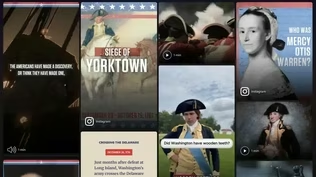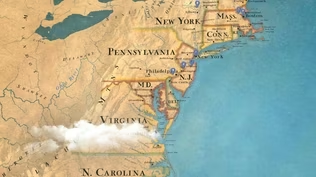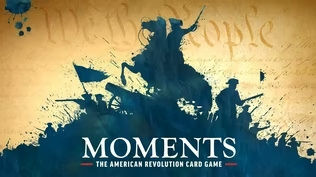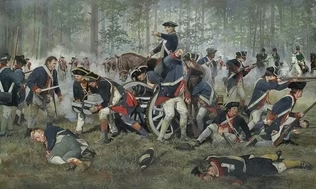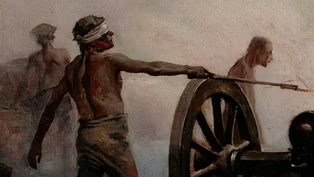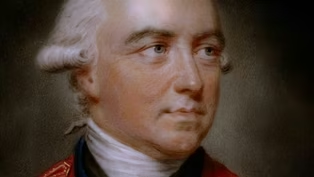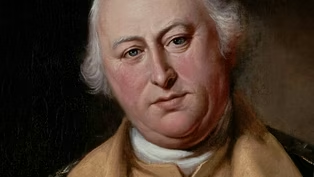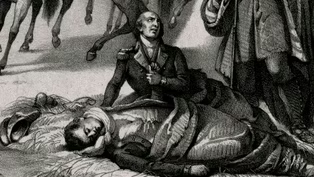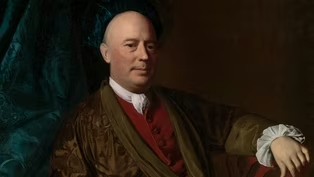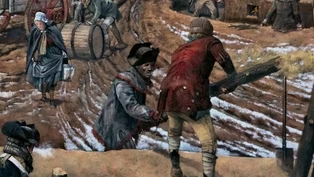
Spain Joins the American Revolution Against the British
Clip: Episode 5 | 5m 43sVideo has Closed Captions
Spain joins the war, but not as an ally of American independence – as an enemy of Britain.
In June 1779, Spain joins France in the war against England. As empire with colonies in America, Spain does not support American independence. However, they see opportunity to attack their British enemies. Meanwhile, privateer John Paul Jones leads daring raids on British supply ships and is hailed a hero by the French court.
Problems playing video? | Closed Captioning Feedback
Problems playing video? | Closed Captioning Feedback
Episodes presented in 4K UHD on supported devices. Corporate funding for THE AMERICAN REVOLUTION was provided by Bank of America. Major funding was provided by The Better Angels Society and...

Spain Joins the American Revolution Against the British
Clip: Episode 5 | 5m 43sVideo has Closed Captions
In June 1779, Spain joins France in the war against England. As empire with colonies in America, Spain does not support American independence. However, they see opportunity to attack their British enemies. Meanwhile, privateer John Paul Jones leads daring raids on British supply ships and is hailed a hero by the French court.
Problems playing video? | Closed Captioning Feedback
How to Watch The American Revolution
The American Revolution is available to stream on pbs.org and the free PBS App, available on iPhone, Apple TV, Android TV, Android smartphones, Amazon Fire TV, Amazon Fire Tablet, Roku, Samsung Smart TV, and Vizio.

MOMENTS: The Revolutionary War Card Game
Use your knowledge of Revolutionary-era moments to build a timeline of real historical events.Providing Support for PBS.org
Learn Moreabout PBS online sponsorship[Cannon fire] Narrator: In June 1779, King Carlos III of Spain joined France in the war against England.
His goal was to recapture for his empire everything Spain had lost to Britain during the Seven Years' War and to add to it, as well, including Gibraltar, the British-held spit of land that controlled the narrow entrance to the Mediterranean.
♪ For the Spanish king, like the French king, the American Revolution was useful only to undercut Britain.
Christopher Brown: This is not about securing American independence.
This is about cutting Britain's economic commercial might down to size, but it's risky, though, especially for Spain, because Spain has a empire in the Americas that looks a little bit like Britain's North American empire only much larger and many, many, many more people.
And so you encourage a colonial independence movement in the British Empire, who's to say your own people won't get the same idea?
Narrator: Given the sudden widening of the global war, the opposition in Parliament called upon King George to direct measures for restoring peace to America.
He would not hear of it.
Voice: The present contest with America I cannot help seeing as the most serious in which any country was ever engaged.
Step by step, the demands of America have risen.
Independence is their object.
Should America succeed in that, the West Indies must follow.
Ireland must soon be a separate state.
Then this island would be reduced to itself and soon would be a poor island indeed.
[King George III] [Gull squawking] Voice: "London Morning Post."
John Paul Jones resembles a Jack o' Lantern to mislead our mariners and terrify our coasts.
He's no sooner seen than lost.
♪ Narrator: John Paul Jones was now in command of another ship-- a slow, battered French merchant vessel.
He fitted it out with 40 old French guns, gathered a 320-man crew from 8 different countries, and renamed it the "Bonhomme Richard" after the French version of Benjamin Franklin's "Poor Richard's Almanack."
♪ In August, the "Richard" and several smaller warships sailed all the way around the British Isles in search of merchant prizes.
Jones took 17 ships, captured 100 British sailors, and locked them up below his decks.
♪ Late in the afternoon on September 23rd, just off the chalk cliffs of Flamborough Head, Jones caught up with a convoy of some 40 British supply ships.
He signaled his squadron to form a line of battle.
When they failed to respond, the "Bonhomme Richard" alone engaged the "Serapis," the larger of the two Royal Navy escort ships.
Commanded by Richard Pearson, a veteran sailor, the British vessel was a fast, new 44-gun frigate.
[Cannon fire] As the battle began, hundreds of English villagers lined the cliffs, hoping to see a British man-of-war destroy the dreaded rebel they called "Pirate Jones."
Narrator: A British broadside caused cannon on the "Richard's" lower gun deck to explode, killing men and putting the rest of the battery out of action.
At one point, the "Serapis" rammed the "Richard."
Their rigging became entangled, and before the British ship could break free, Jones ordered his men to throw grappling hooks, locking the two ships together gunport to gunport.
[Cannon fire] Their crews fired into each other at point-blank range.
The "Bonhomme Richard" took the worst of it-- half the crew dead or wounded, fires raging everywhere, decks slippery with blood, seawater rushing in through holes blasted in the hull-- but then a sailor high in the "Richard's" rigging managed to lob a grenade down the main hatchway of the British ship.
[Explosions] It set off explosions from one end of the "Serapis" to the other.
[Explosions continue] Half its crew were dead or wounded.
Captain Pearson surrendered.
Jones clambered aboard the British warship and sailed it into neutral Dutch waters.
The "Bonhomme Richard" sank the next day.
In Paris, John Paul Jones was hailed as a hero.
He met Louis XVI and his queen, Marie Antoinette, and when he heard that George III had knighted Captain Pearson for fighting so valiantly, Jones was unimpressed.
"Should I have the good fortune to fall in with him again," he said, "I'll make him a lord."
♪
Video has Closed Captions
Clip: Ep5 | 8m 56s | The Continental Army engages the British in the last major battle in the North of the Revolution. (8m 56s)
Britain and the Southern Strategy
Video has Closed Captions
Clip: Ep5 | 4m | When it becomes clear that the British won’t win in New England, they set their sights on the South. (4m)
The British Siege of Charleston
Video has Closed Captions
Clip: Ep5 | 4m 44s | The British surround and siege Charleston, South Carolina, one of the largest cities in America. (4m 44s)
Video has Closed Captions
Clip: Ep5 | 5m 56s | The American Revolution has spilled into a global war, but the United States hangs on by a thread. (5m 56s)
Financing the American Revolution
Video has Closed Captions
Clip: Ep5 | 2m 59s | The economic realities of the war start to settle in for both the Americans and the British. (2m 59s)
Preview: The Soul of All America
Video has Closed Captions
Preview: Ep5 | 30s | The war drags on and moves to new theaters: at sea, in Indian Country, and in the South. (30s)
Winter at Valley Forge: Hardship & Desperation
Video has Closed Captions
Clip: Ep5 | 4m 26s | The Continental Army threatens to unravel while suffering harsh winter conditions at Valley Forge. (4m 26s)
Providing Support for PBS.org
Learn Moreabout PBS online sponsorshipSupport for PBS provided by:
Episodes presented in 4K UHD on supported devices. Corporate funding for THE AMERICAN REVOLUTION was provided by Bank of America. Major funding was provided by The Better Angels Society and...

